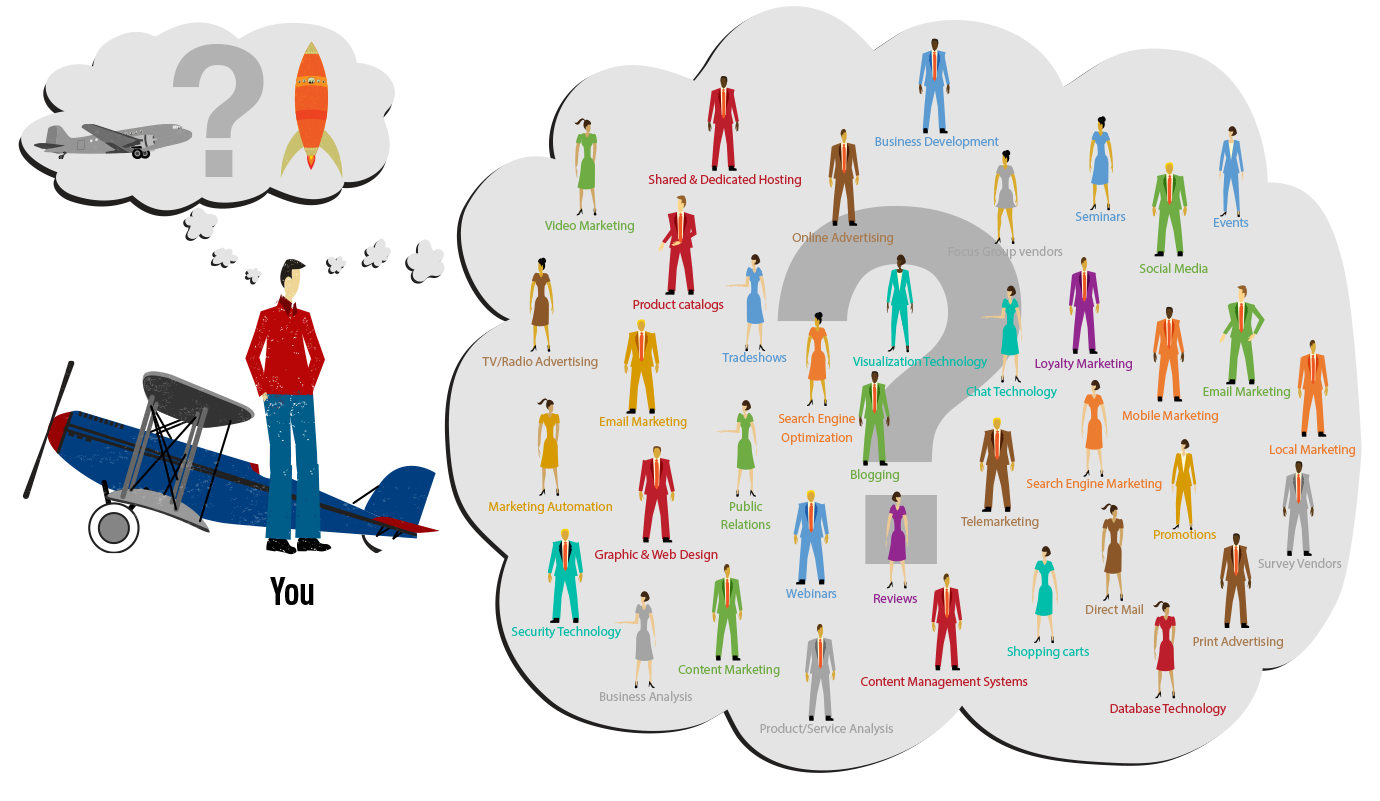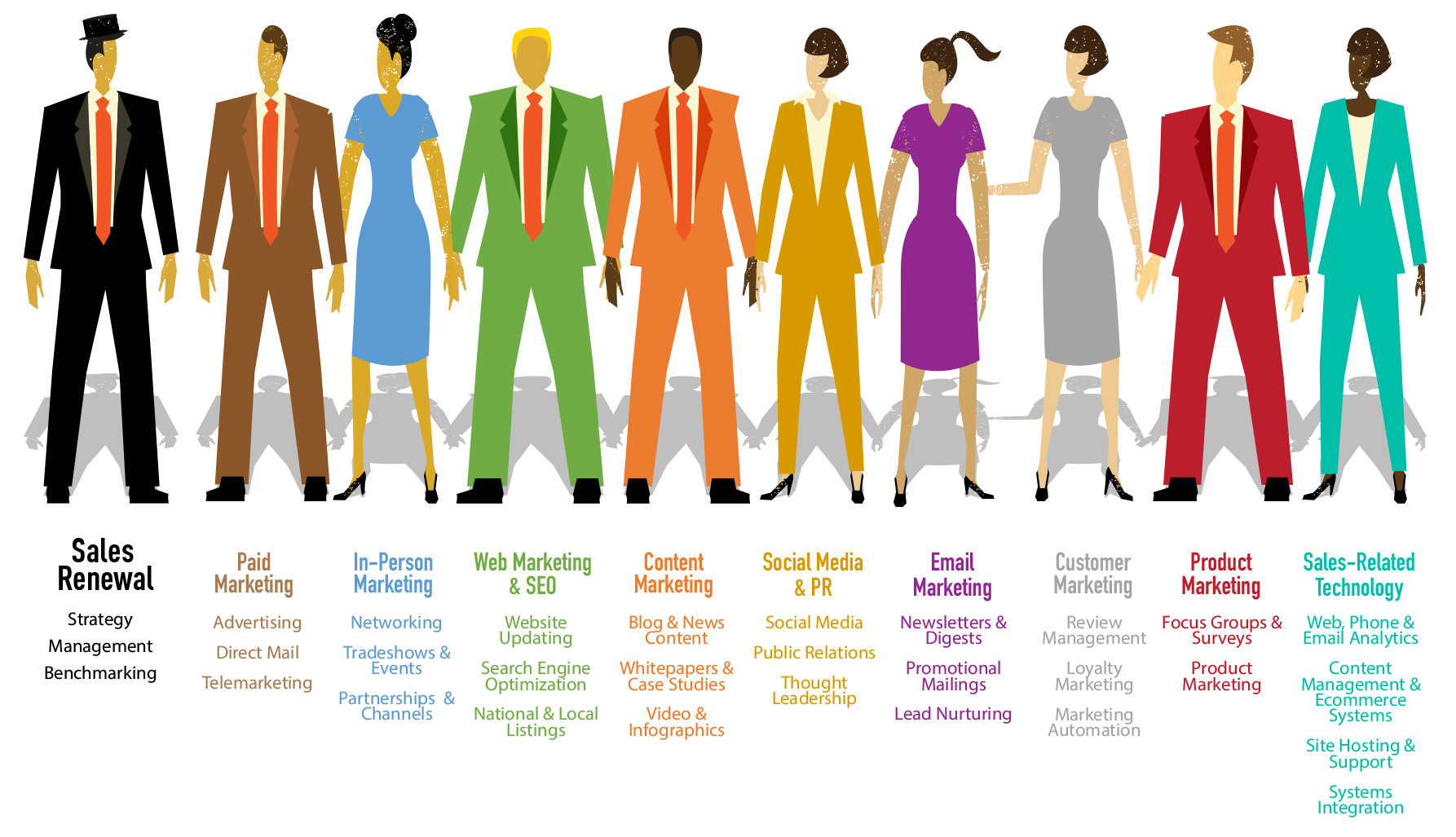
Why Small Business Marketing Fails
Marketing is complicated and resource intensive.
Big companies, with big resources, tend to excel at it while smaller businesses, with fewer resources, often fail. In fact, 50% of small businesses fail within 5 years and 66% fail within 10 according to the U.S. Bureau of Labor Statistics.
Failure is so common because small businesses that want to better market themselves—in other words, cost effectively increase their leads and sales—face some fundamental challenges:
Lack of Coordinated, Integrated Marketing Plan
According to U.S. Bank, 78% of small businesses fail because they lack a well-developed business & marketing plan. Unfortunately, too many businesses don’t have the time, marketing expertise or analytic skills needed to develop an integrated marketing plan that leads to successful growth. So they often pick a single marketing tactic based on “their gut”, or pick the same tactic that worked for a colleague in a different industry. Unsurprisingly, the end result is often disappointment: a new website that doesn’t help as much as your gut “thought”, a direct mail campaign less successful at lead gen than your colleague’s, etc.).
Worse, even if it was a reasonable tacit to employ and was implemented by a competent agency, depending on only a single marketing tactic for growth is a recipe for failure. Each marketing tactic has its own strengths, weaknesses, costs and benefits, which an intelligent, coordinated, integrated strategy can weave together in a whole is greater than the sum of the parts manner.

A cost effective marketing plan should coordinate and integrate a variety of complimentary tactics (e.g., ads and websites in sync to increase the ad conversion rate, sharing knowledge of keywords that work well in advertising with a site’s and blog’s copywriters to improve page rank, etc.).
Learn About an Integrated Marketing Plan
Lack of In-House Expertise
Even with a coordinated, integrated marketing plan, marketing today is so multi-disciplinary and complex that many small businesses lack the marketing, technology and/or analytics expertise they need to implement that plan in-house:
Unfortunately, if you don’t have your own marketing department, this gap between what you have and what you need is typically filled by freelancers and outside agencies. Which raises a new problem: finding, hiring and managing these folks and their many marketing projects is time consuming and challenging but must be done well for your marketing program to succeed. If marketing management is not something you want to do in house, see if one of your agencies can provide a more comprehensive solution.
Learn About a Comprehensive Marketing Solution
Misaligned Financial Interests
Most marketing agencies charge for their time, either before they do the work (in a retainer) or after (when they charge for their time spent). Not surprisingly, when an agency charges by the hour, they become highly motivated to increase the number of hours they devote to an account. Stated more formally, an hourly-based financial model motivates agencies to maximize their marketing efforts without regard to results or efficiency.

This misalignment of financial interests lies at the heart of many agency – client conflicts: agencies wanting to maximize their revenue by maximizing their effort while owners wanting maximal results at minimal effort (since less effort = less cost).
This dilemma can be resolved. Just as many other professional services firms are implementing alternative billing methods that bypass the charge-by-the-hour model, forward-thinking marketing agencies, too, are beginning to offer programs that incentivize results, not effort, such as by sharing risk & reward.
Ready for a New Approach?
Contact us for a complimentary, 1-hour consultation.
3 Steps to Marketing Success
1. Develop a Marketing Blueprint – a comprehensive look at the strategies, marketing programs, sales-enabling technology and budget your business needs to cost effectively grow its leads & sales.
2. Build out your Blueprint – Set up all the people, expertise, technology and tools needed to successfully implement your marketing plan.
3. Run your Marketing Program – Put your plan into action, focusing on the day-to-day marketing and technology work and monitoring progress for continuous improvement. At the beginning of every quarter, review all marketing activities ROI’s during the previous quarter and make adjustments.

